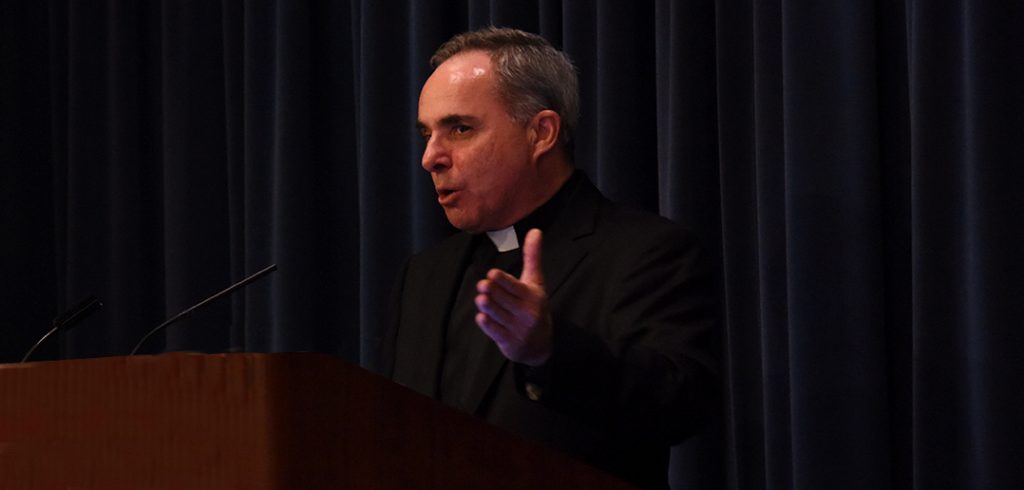 Some of us may have sat through a homily that goes on too long, a canned wedding speech, or a funeral where the preacher’s eulogy doesn’t connect with the mourners. It’s a problem that Thomas Scirghi, S.J., hopes to address in his new book, Longing to See Your Face: Preaching in a Secular Age (Liturgical Press, 2017).
Some of us may have sat through a homily that goes on too long, a canned wedding speech, or a funeral where the preacher’s eulogy doesn’t connect with the mourners. It’s a problem that Thomas Scirghi, S.J., hopes to address in his new book, Longing to See Your Face: Preaching in a Secular Age (Liturgical Press, 2017).
“Before Vatican II, priests didn’t get training in preaching; it was presumed that if you knew the Bible you could preach it,” said Father Scirghi, associate professor of theology.
Father Scirghi has taught a generation of priests, deacons, and ministers in the art of preaching. He said that before Vatican II, congregations relied on priests’ homilies for interpreting the readings and the gospel.
“There was a time when Catholics were not that well educated but knew a phony when they heard one, and they could appreciate a good homily because they wanted to learn and be inspired,” he said. “Today, many Catholics are well educated, but lack an understanding of our traditions.”
Father Scirghi said that he got the title for the book from the Book of Psalms 24, which reads, “Lord, these are the people who long to see your face.” He said that in many traditions, including Catholic, Jewish, and Protestant, the preacher mediates the presence of God.
“In a secular age, we shouldn’t presume that we no longer live in a religious society,” he said. “There are many who are seeking the Lord.”
In an age when many say they’re “spiritual but not religious,” he said that preachers should meet their listeners where they are. When St. Paul preached in Athens, Father Scirghi said, he didn’t criticize their worship of idols; instead he found common ground in their deep sense of faith. Preachers should be aware of the “language of tradition and culture” of their listeners.
“Be aware of the idea of [different]cultural expressions,” he said. “In some churches you may preach on Sunday for eight to 10 minutes, but if you’re in a black church and you preach eight to 10 minutes, you’re just getting started.”
He said that the word “homily” means conversation, so it falls upon the preacher to listen, too.
“I’m always listening while preaching. Hopefully there’s not a lot of coughing and shuffling, but good feedback sounds, like an understanding grunt,” he said.
“What I don’t want to do is water down the [Catholic] message, but preach in a way that everybody can understand regardless of whether or not they’re Catholic—the word “catholic” means universal,” he said.
Listening and awareness become particularly important at weddings and funerals where many in the congregation are not of the same faith, he said. Some may be very devout, while others have never been to church.
In every case the most important thing the preacher can do is do their research. He said that writing a homily is a weeklong process. At Spellman Hall, the Rose Hill Jesuit residence, the priests start talking about the Sunday readings early in the week.
“We read and discuss, and on Thursday I’ll go to the sources and see what the greats say about it,” he said.
By Saturday morning, Father Scirghi said, he pulls out his yellow legal pad and begins to write out the homily. He has it typed by the end of the day Sometimes he pulls from current events. (He paraphrased the German theologian Karl Barth, who said, “A good preacher has a bible in one hand and newspaper in the other.”)
When he delivers the homily on Sunday, he says he’s not anchored to the lectern.
“I use gestures like words—but being an Italian I sometimes have to reign that in,” he said. “Ultimately, we don’t have to sacrifice content for charisma.”


